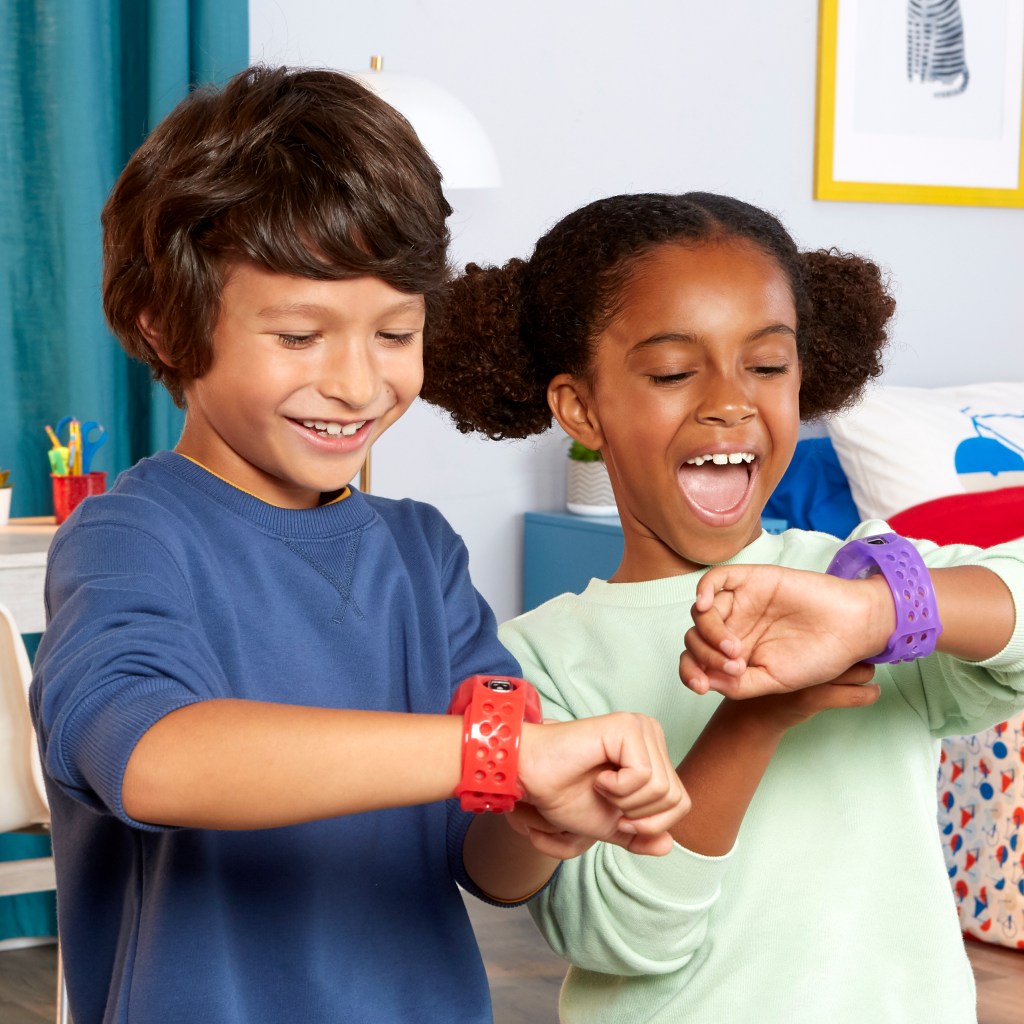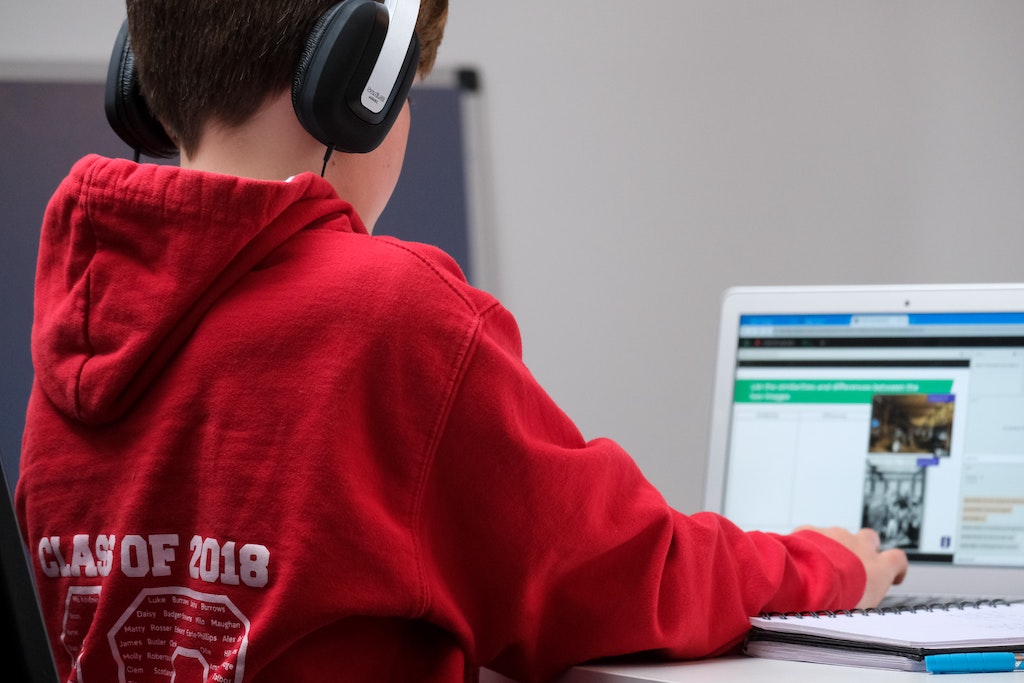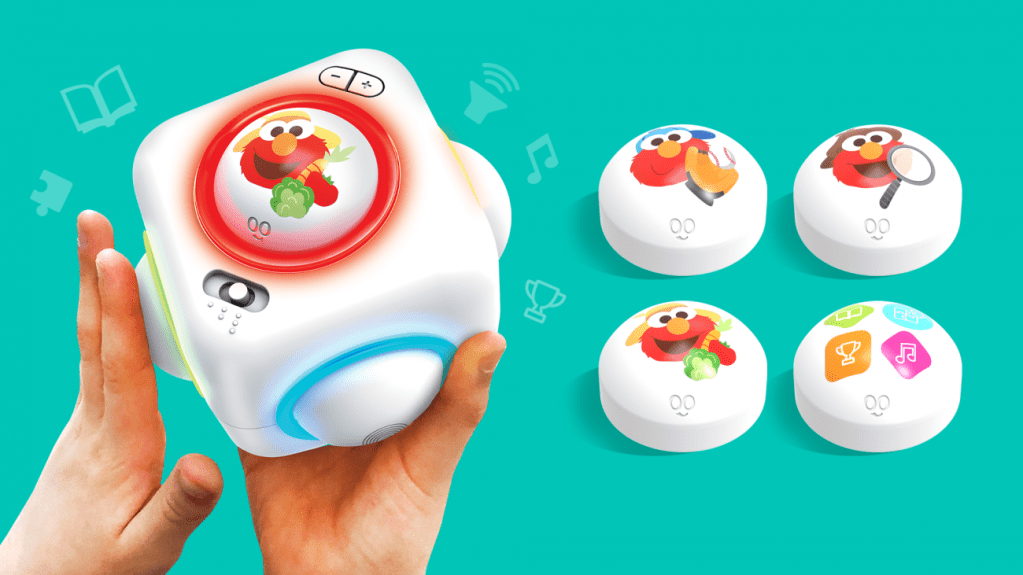
-Jessica Solloway

-Jessica Solloway

As a dad who works in tech, I always believed that technology was a vital developmental, discovery and connection tool for my kids. What I didn’t realize was just how quickly they’d need to learn to use it, and how fast they’d become fluent. Remote learning during the pandemic accelerated my kids’ use of technology. I recently watched my 7-year-old successfully deliver a presentation over video chat to his teacher and classmates—something I couldn’t have imagined prior to this pandemic.
Over the last year, kids have had to become experts at navigating online environments for learning, collaboration and communicating. Whether it’s giving a presentation to their class, devising video game strategies over video chat or writing a book together across different time zones, how our kids use technology will continue to evolve.
However, reality dictates that no matter how creative our kids are, how forward-thinking they may be when it comes to technology use, they need a solid foundation in digital literacy and online communications skills in order to successfully navigate the digital world. Kids need a space to learn, to make mistakes, and hone their skills with parental guidance, just like they need swimming lessons before they can get in the pool on their own.
Here are three tips for parents who are looking to help their kids navigate the digital world.
1. Choose the Right “Digital Playground” for Your Kids
When deciding where your child will begin their online journey, consider apps and experiences that help balance child independence with appropriate supervision. According to a Dubit study, 74% of parents of 6-12 year olds are concerned about their children interacting with strangers or people they don’t know online. At the same time, parents want to give their kids a way to have fun and connect with their friends and family without needing to hover over their every move. This is actually one of the key reasons we built Messenger Kids—to give kids a space made just for them with parent supervision. For instance, parents can see images and videos their kids send and receive in the app, giving them an opportunity to talk with their kids about how they felt when they saw a certain photo, or why a certain video might have hurt someone’s feelings.
2. Don’t Just “Set and Forget” Rules & Controls
As kids grow, their interests and needs change and it’s important for parents—and technology—to be flexible. Parents are in the best position to know what’s appropriate for their child, from the type of content they view, to who they can connect with online or how much time they can spend in a particular app. But an experience that may be ideal for a 7-year-old will look very different from what’s best for a teenager (I experience this every day with my two kids!). Remember to treat rules and parameters as an active conversation rather than something that’s set and forgotten to help continuously balance giving kids independence while still providing parental supervision and guidance.
3. Prioritize Quality of Screen Time
Something I’ve learned with my own kids during this pandemic is that prioritizing quality of screen time is just as important as managing the quantity of time they can spend on their devices. Prioritizing experiences that help kids actively engage with meaningful content or other people requires teamwork to succeed. For instance, find time to watch your child’s favorite TV shows together, or have your child teach you how to play a new game. Ask questions about what they enjoy, how the plot is progressing, and what decisions they’d make if they were the main character. This is a great way to celebrate and respect your kids for discovering and learning new things online.
The future of technology is one where it will be even more ubiquitous than it is already. Making sure our kids are ready for their next presentation or play date in the virtual world is going to intertwine with the “real world” like it never has before, and preparing our kids in a safer environment for that future should be a top priority for us all.
Want to Connect With Your Child? Try Technology
10 Reasons Why You Need to Teach Internet Safety to Your Kids
How to Create a Safer Internet Experience for Kids
Every family is different, which also means that every family’s experience with technology looks different. Whether you’re #TeamTech or a little hesitant about your child exploring online, we all have one thing in common: We want our families to have a safe, positive technology experience.
The new families.google is an all-in-one resource for parents navigating their family’s tech journey—whether they’re looking for info on the latest apps, tips for talking to their kids about kindness in the digital world or advice on how to build healthy online habits.
Three moms tried it out, and shared some insight on how they manage technology at home:
View this post on Instagram
Natasha D’Anna
Mom-of-three Natasha has seen her kids’ screentime increase quite a bit over the last year, especially when you thrown in activities on top of virtual learning. Since she can’t be there to watch each move her kids make online, Natasha has relied on Google’s Be Internet Awesome Interland game to teach her kids online safety in a way that’s also fun for them!
View this post on Instagram
Vera Sweeney
New York-based mom Vera learned firsthand what can happen when kids don’t understand their tech, after her youngest accidentally racked up charges on his tablet! With the help of families.google, Vera’s family has had some helpful tech talks to keep everyone protected moving forward.
View this post on Instagram
Chelsi Lovos
Between games, apps and connecting with friends, being online is an exciting adventure for little ones! SoCal mom Chelsi has used Google Family Link to help her three kids manage their screen time and manage device usage—so they can better balance online exploration with offline fun!
Find resources, games and more fun content to help guide your family’s tech journey at families.google

The Online Parental Controls You Didn’t Know Existed
Google’s Newest Tool Makes Managing Family Tech So Much Easier

Let’s face it, this is going to be a very unique cookie-selling year. Many councils across the nation are canceling booth sales due to their local COVID restrictions. Nonetheless, the cookie sales must go on. If your girl is allowed to set up a physical cookie booth and can do so safely, remind her to mask up, practice social distancing, and request her booth visitors to do the same. However, this next cookie season will rely even more on the digital cookie program.
Going digital will empower your girl to find creative ways to reach customers with her cookie business and develop a digital connection with her buyers. After your girl reviews the Girl Scouts’ online safety pledge and guidelines, The Startup Squad has some sure-fire digital cookie strategies below. She’ll level up her digital cookie-selling powers in no time!
This year, more than ever, girls should focus on their “why” and not their “what.” As much as people love cookies (the what), your girl can attract more orders and larger orders by focusing on her why. Why she’s selling cookies, why she needs help to meet her goal in this most challenging of cookie seasons, why the cookie funds will help her community. Engaging stories drum up sales, so encourage your girl to be a storyteller in her videos and email messages that focus on her why! And when it comes to the what, the cookies, have her describe the cookies in a way that will get people interested and excited to try each product. It’s one thing to explain that she’s selling mint cookies, it’s another to describe them as the chocolatey, minty, melt-in-your-mouth deliciousness that so many know and love. Finally, its easier to get an existing customer to order more boxes than it is to find a new customer. Encourage her to ask her customers if they want to donate a box or two to the needy or military.
The digital world can create opportunities for your girl to expand her customer base across the globe starting with her digital cookie page. A catchy name, a unique slogan, and attention-grabbing visuals are just some of the ways your girl can make her online cookie shop standout. Her cookie video is a great opportunity for her to act like her fave entertainer and sing about the cookies or do a dance number. It’s all about having fun! Check out this video from a girl whose creative cookie duet with her dad has been watched over two million times!
To kick off cookie season, your cookie CEO can create her own digital sales event on Facebook Event or Instagram Live. Share her digital cookie link and news about the event on your social media accounts to help bring in a huge audience. Your girl can even reach out to influencers with large networks and ask them to share the link to her page. Speaking of influencers, have your girl guest star during your next work Zoom call so she can pitch your co-workers to help her hit her cookie goals!
Your girl can add a personal touch to her cookie video production by creating a custom colorful display of the cookie boxes and using an eye-catching unique background (or even a virtual one!). Good lighting is also key for your girl’s videos so online viewers can see her cookie business in the best way possible. What’s more, proper lighting allows prospective buyers to better see the cookie boxes as your girl highlights and describes each one. Last but not least, remind your girl to wear her troop uniform with pride in every video!
Whenever your girl sends a virtual or physical thank-you card to her customers, she builds a strong, lasting connection with them. Impressed customers always come back! Your girl can also tailor each thank-you message to fit the people she’s communicating with. For example, she can inform previous buyers about the nut-free or gluten-free cookie types they have yet to buy. Or remind her customers to stock their freezer with boxes to last them until next cookie season. Canva is an easy-to-use and free online graphic design tool that’s great for every type of digital or printed card.
Excited for your girl to build her cookie empire, grow her entrepreneurial confidence, and flex her digital marketing skills? We know we are! And we’re going to share on The Startup Squad’s social media accounts the digital cookie page of one lucky cookie seller. Check out The Startup Squad’s Instagram page for details about how your girl can be The Startup Squad’s preferred digital cookie seller. And download our handy tip sheet to keep these tips and more with her throughout the cookie season. We wish nothing but sweet success for your girl!
Originally focused on helping children with disabilities express their creativity through music, the team at SKOOG created a suite of unique hands-on technology devices that children of all abilities can enjoy. Their patented platform includes a parent-controlled app with unique cube-like hardware hat allows your little ones to play and create without relying solely on a smartphone screen. Now they have partnered with Sesame Street to pair SKOOG technology with Sesame Workshop’s early childhood expertise and educational content.

By pressing soft, squeezable, interchangeable RFID buttons on their SKOOG Cube, little ones will be able to enjoy interactive songs, games and stories featuring the voices of beloved Sesame Street characters.

“Children’s interactive play has never been as important as it is right now. In today’s complex digital world, we set out on a mission to help motivate and inspire children, leading the shift from passive consumption to active engagement—while enabling children of all abilities to play, engage, and consume safe and smart content independently,” said Gregg Stein, SKOOG Inc., CEO. “As huge Sesame Street fans, we’re thrilled to be collaborating with Sesame Workshop, a community of creators, educators, and unforgettable characters built on diversity, equity, and inclusion. Together, we have created a best-in-class physical and digital creative sandbox that will empower millions of children to experience the joy of infinitely expandable personal play patterns, enabled by stories and audio books, branching adventures, games, musical instruments, songs and so much more.”
“Playful learning is at the heart of everything we do at Sesame Workshop, so we’re thrilled to work with SKOOG, Inc. to bring this enriching new play experience to life,” said Scott Chambers, Sesame Workshop’s Senior Vice President & General Manager, North America Media & Licensing. “We hope that our unique combination of SKOOG technology and Sesame Workshop’s powerful content will inspire kids and families to get creative together – with a little help from the Sesame Street Muppets!”
SKOOG is launching at CES Digital 2021. Be the first to learn more by signing up at: https://skoog.media/
—Jennifer Swartvagher
All photos courtesy of SKOOG
RELATED STORIES
CNN & Sesame Street Host Town Hall on Racism
Study Shows Kids Who Watch Sesame Street Do Better in School
Sesame Street ‘Stepbrother’ Helps Kids Understand Blended Families

We had the opportunity to interview Tim Allen, the CEO of Care.com, the digital platform that provides comprehensive solutions for finding, managing, and paying for childcare and more, about what life might look like this summer and how working parents can navigate the future during this new, quarantine-style world.
How do parents navigate going back to their workplaces while schools and daycares remain closed?
“One thing that’s been abundantly clear to everyone these last few months is that childcare is simply essential for working parents. That means that access to childcare will be critical to our economic recovery. In fact, in a recent survey, we did with our members, of the more than 1,000 who responded 98% said childcare is crucial for them to get back to work. With daycares and schools closed, we expect that more families will look to hire in-home caregivers as parents return to their workplaces. In-home care is in abundant supply with a workforce of professional nannies, displaced teachers, daycare workers, and college students. In addition, having one person come to your home to care for your children is far less daunting to some parents right now because it enables them to more closely manage the number of people with whom their kids are in contact and to control the environment with things like regular handwashing.”
What are you hearing from parents about those concerns going forward?
“They are concerned about bringing caregivers into their homes and concerned about their kids going back to daycare. In our survey, more than half said they wouldn’t feel comfortable putting their child back in daycare and ¾ of those parents say they’re now more likely to hire in-home care. As a parent myself, I get it and expect that this will be an on-going discussion in most households for many months. At the end of the day, each parent has to make the decision that best suits their family.”
What do you think the childcare landscape will look like in the coming months?
“Clearly there will be changes inside daycares to control class sizes, interactions and the ability to keep things sanitized. Exactly what they will look like remains to be seen; we’re watching some of the European countries who are slowly started to re-open. And again, with daycares closed and even after they reopen, we anticipate many families will turn to in-home care as their new childcare solution.”
What about the summer?
“Many camps and summer programs are canceled. While it’s true that many camps and traditional summer programs are canceled, there is actually some good news: we parents have some time to solve for that and make alternate arrangements. One of the most challenging aspects of the last few months was how quickly schools and daycares closed. Overnight, we were all scrambling to be stand-in teachers as well as parents all while trying to work. Now with the luxury of a little advance notice, we can make new plans. Not surprisingly, most of the camps and extracurricular programs are being adapted for a digital world. We have a service—Care.com Explore—where thousands of classes and programs are now available virtually. From music to video production to art to science…it’s all there and you can put together a pretty fun summer for your kids.”
If parents are hiring nannies or sitters, what should they do to ensure a healthy environment, given the pandemic?
“It’s essential that parents and caregivers have candid conversations on this and are clear about expectations while on the job. When a caregiver is in your home and with your child, you have the right to set the house rules. For clarity, we encourage parents to have a nanny contract where everything is mapped out from salary and hours to responsibilities and yes, to expectations about maintaining certain protocols surrounding COVID-19. We encourage both families and caregivers to follow the CDC protocol guidelines and, on our website, we have recommendations on specific questions to ask during the interview process to help ease concerns.”
What else should parents think about going forward?
“The parent/caregiver relationship is unique. On the one hand, the caregiver becomes a part of your family; after all, you’re entrusting them with your child. On the other hand, you’re now a household employer and that comes with certain obligations, like paying your caregiver over the table. Our Care.com HomePay team often hears from parents who are concerned that their caregiver won’t want to be paid on the books and here’s what we counsel them:
Paying your caregiver legally is more than just the law; it’s protection for the caregiver, someone who is now a part of your family. During these last few months, while parents have been home, caregivers who’d been paid legally had access to paid sick leave, paid time off, and unemployment benefits, as well as any help offered by the federal government. Those were real benefits and real dollars at a time when it was desperately needed. As parents look to hire in-home caregivers, we urge them to start the relationship on the right foot: paying above board. Is there anything else you’re hearing from parents right now? Knowing how intertwined care and work are, we were curious if these last few months have influenced how parents think about childcare from a policy standpoint, so we asked some questions in our survey and the results were eye-opening. A whopping 92% feel that childcare is something that should get more attention from the government and 68% said that childcare policies will impact how they vote in the election this November. I think it’s fair to say that childcare is a topic we’re going to be talking about for quite some time.”

Like most other parents, I used to think that social media was completely unsuitable for kids. There were so many dangers to be concerned about ranging from cyberbullying and social media addiction to the poor self-esteem that kids can develop thanks to comparing themselves with unrealistic social media standards. Let’s not forget the negative impact social media could have on an individual’s mental health. It just seemed safer to stop my kids from using it.
Then one day, I realized that I wasn’t being fair to my kids. They were growing up in a digital world and whether I liked it or not, technology was a huge part of their lives. Far from being a smart move, banning social media in my house was actually crippling their growth.
After all, social media did have lots of benefits. For instance, it is a great avenue for self-expression and creating awareness on important issues. Additionally, it helps kids connect with different people, make friends and get authentic support when they need it.
I realized that instead of preventing my kids from using social media, I should be teaching them how to use it in a safe and positive way. I had to instill healthy habits surrounding their social media use when they were still young and I could share the experience with them. That way, when they were older and controlling their own accounts, they’d know how to use social platforms positively.
To habituate my kids to positive social media use and make their screen time more meaningful, I taught them that it was important to:
1. Promote positive content. I wanted my kids to use social media in a positive way so I encouraged them to post happy, fun content. We started out by finding positive or humorous stories that they could share with friends and family. Eventually, they learned to do it on their own.
2. Be nice. One of the first things I taught my kids is that being mean on social media isn’t ok. Just because they couldn’t be seen and had the option of anonymity didn’t mean that they had the freedom to post embarrassing or hurtful messages. I made it clear that I expected them to treat others with respect even if they had differing opinions.
3. Express themselves. Social media provides a great platform for self-expression and I wanted my kids to take full advantage of this. I encouraged them to share the art, music or hobbies they liked as well as their thoughts and feelings on a wide range of topics.
4. Think before posting. I made sure that my kids understood that whatever was posted online had a way of staying there, even when they thought it was deleted. Before hitting “enter”, I asked them to think their posts through first. Will it hurt anyone? What was the post intended to achieve? What message did they want to send?
5. Use privacy settings correctly. Whenever my kids and I joined a new social media platform, we’d go through the privacy settings together. This way, I could ensure that they understood each setting and how to turn it on or off. I also explained that passwords were there to protect them and they should never be shared with anyone, not even their closest friends.
6. Find balance. Social media is interesting but too much of it can be dangerous. In order to instill healthy social media use habits in my kids, I had to limit and monitor the time they spent online. They had designated screen time every day and they could only go online if my wife or I were present. When they weren’t using their devices, my kids were either playing outside or pursuing their other hobbies.
Social media has its positive and negative sides. As parents, we can choose to either keep worrying about the dangers posed by social media or teach our kids to safely navigate this online world. Habituating our kids to positive social media use when they’re still young gives them ample time to grow up learning how to put these platforms to positive use.
Think your kids are too young for the world wide web? Studies show that kids are using devices at a younger age. So even if it’s just Baby Shark videos on repeat, if your kid has a device (or uses yours) to connect to the internet, you’ll want a way to do it safely.
The digital safety and well-being app, Qustodio, aims to do just that. Even though we know you take cautious measures to keep your kids safe and educated about the digital world, Qustodio is here to add that extra layer of protection by offering more features and a complete dashboard of data to give you true peace of mind. We tried it, and here’s how we’ve found it can help you protect your kids.
Learn more about Qustodio and download the app for free here.

1. Problem: Once my son is on the screen it’s hard to pry him away.
Solution: Qustodio encourages parents to talk with their kids and agree on healthy time limits. With Qustodio you can easily limit your child’s screen time across all of their devices. You can set time limits for games and apps and even block apps you don’t want, as well as certain times of day you don’t want your kids accessing those apps.
2. Problem: I want to encourage smart tech use, but the internet is a vast and scary place with lots of inappropriate content for kids. How can I ensure my child is accessing appropriate content?
Solution: There’s a lot on the internet—both good and bad—curious kids can explore. Qustodio has smart filters that block inappropriate content, even in private or incognito mode. You can also search and monitor what your child is viewing for extra peace of mind.
3. Problem: My kids are spending too much time on social networks.
Solution: Qustodio allows you to limit how much time is spent on social networks like YouTube, Facebook, Twitter, Instagram, WhatsApp and more.
4. Problem: I don’t know who my child is texting or calling.
Solution: Qustodio allows you to monitor calls and SMS on Android devices. You can view your child’s calls and texts, read SMS messages and set a list of blocked contacts.

5. Problem: I want to use the internet after lights-out, but I don’t want my child to have access.
Solution: Don’t shut off the internet for the whole house; parents deserve their downtime to chill and binge-watch Netflix or meet deadlines for work. Qustodio allows you to shut off the internet to specific devices, giving you full control of who is on the internet and when.
6. Problem: I want to give my child some independence but like most parents, I worry about her safety. Can I monitor where my child is without constantly texting or calling them?
Solution: Qustodio features Location Tracking and Panic Alerts. You can track your child’s location and in an emergency your child can send you Panic Alerts from Android devices.
Learn more about Qustodio and download the app for free here.
—Amber Guetebier
photos: Qustodio
The other day, my youngest daughter and I were watching some of her favorite videos on my iPad when it hit me how different life is for my kids. Growing up, the most technologically advanced things we were exposed to were the games at the neighborhood arcade.
Now my kids are growing up in the age of the internet and they’re interacting with the digital world, whether I like it or not. It was up to me to teach them the ins and outs of being a good digital citizen. I wanted them to learn not only how to be safe online but also how to creatively, positively and productively navigate the online world.
The first step was educating myself on what my kids are up to online. I didn’t want to be one of those parents who are clueless about their kids’ online habits so I got curious. I asked them about their favorite sites, what games and videos they loved and why. It was an eye-opener.
Realizing that my kids spent a sizeable amount of time online made me decide to teach them some basics about good digital citizenship:
Respect themselves and others online.
My kids know that they are to respect others online just as they respect themselves. It’s so easy to hide behind a screen and hurl insults and abuse at others but how would they like it if someone did the same to them?
Additionally, I try to instill a sense of empathy in them by reminding them to think of the other person on the other side of the screen. I also constantly encourage them to be kind online and to try as much as possible to post positive, constructive comments and promote positive behavior online.
Protect private information.
From the time they were young, I taught my kids to be safe online by not sharing information that should be kept private. This includes things like their address, name, age, location, passwords, etc. As they grew older, I expanded this lesson to include discussions on the downside of oversharing information with others, even those they think to be their friends.
I remind them to read over anything before they post it and to think of the different ways it could be interpreted. Sure they might mean something as a joke but it could come off as offensive to someone else.
Verify the information they find online.
Something else I keep emphasizing to my children is the importance of verifying whatever information they come across online. Just because something is on the internet doesn’t mean it’s true. I encourage them to be detectives, questioning what they see and hear, recognizing red flags and doing their own research to verify the truth.
Similarly, we’ve had discussions about using digital content and the importance of citing sources, especially when doing schoolwork or projects. They understand that digital content is intellectual property and should be treated with respect.
Stand up to cyberbullying when they see it happen.
With cyberbullying being so prevalent on social media, I decided to teach my kids to stand up for those they see being bullied. They know they need to speak out about it or come to me should they encounter any form of cyberbullying. I also taught them how to flag and report such incidents to the relevant websites for action.
The conversation on being a good digital citizen is an ongoing one in our house. I keep discovering new things to address and discuss and I don’t mind because I know my kids will be better for it.